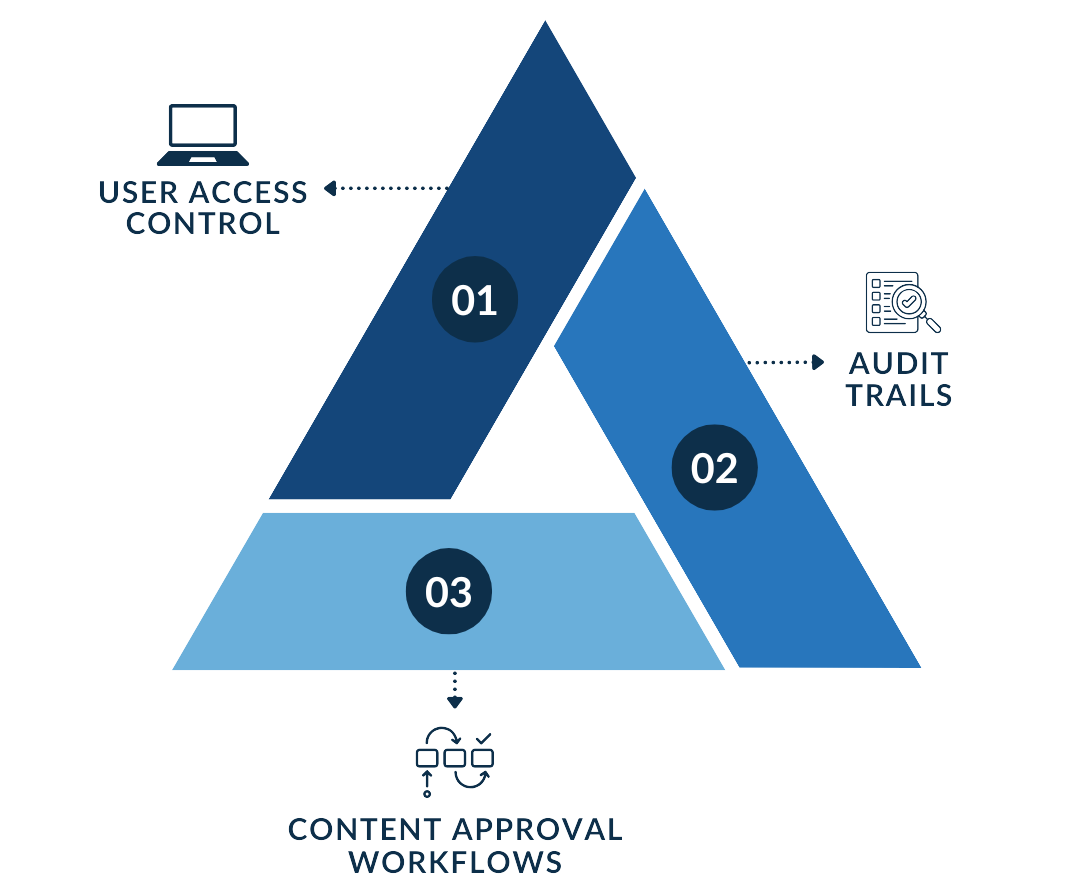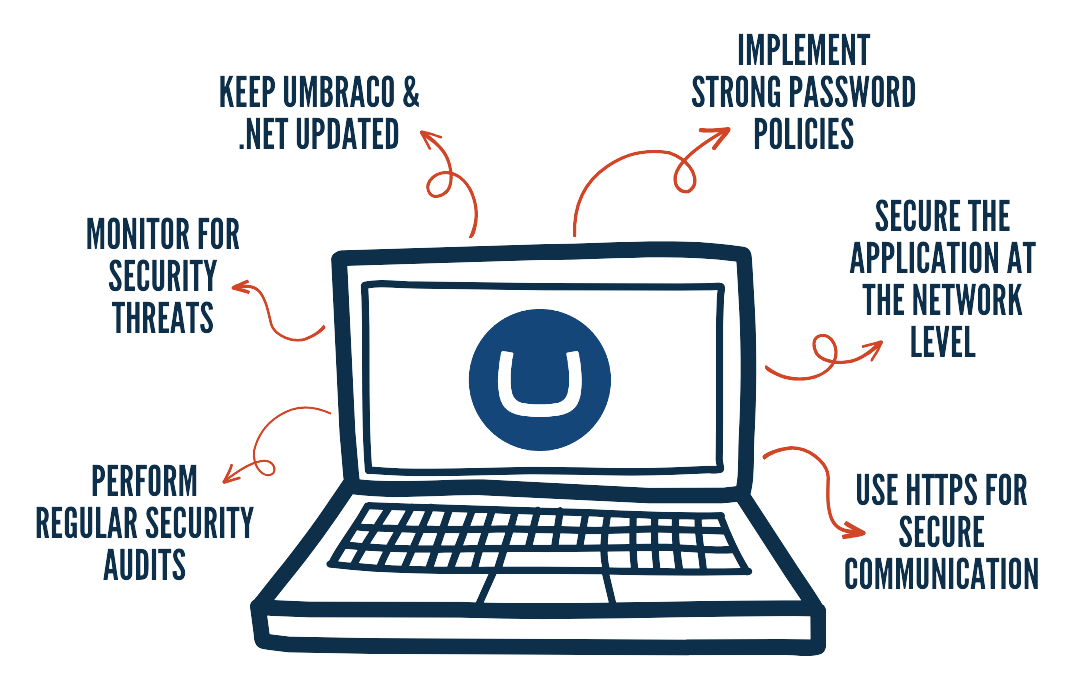As digital threats continue to evolve, ensuring the security of web applications is a top priority for businesses and developers alike. With cyberattacks becoming more sophisticated, companies must implement robust security measures to protect sensitive data and maintain the trust of their users. Umbraco, an open-source content management system (CMS), combined with the powerful .NET framework, provides a secure foundation for building dynamic and reliable web applications.
This blog explores the security benefits of developing web applications with Umbraco and .NET, including built-in security features, best practices for developers, and how to safeguard applications from common vulnerabilities.
Why Security is Critical for Web Applications
Web applications are integral to business operations, from handling customer transactions to managing internal data. However, this reliance on digital platforms has also made them prime targets for hackers seeking to exploit vulnerabilities. A breach in security can lead to data theft, financial loss, and significant damage to a company’s reputation.
Ensuring that your web applications are secure protects both the business and its users. By choosing a secure development platform like Umbraco and .NET, you build a strong defense against potential threats from the ground up.
Umbraco: A Secure Content Management System
Umbraco is an open-source CMS designed with security in mind, offering a range of built-in features and best practices that help developers build secure web applications.
User Access Control
Umbraco provides a robust user management system that allows administrators to control who has access to different parts of the application. With customizable user roles and permissions, businesses can restrict access to sensitive areas of the website and ensure that only authorized personnel can make critical changes.
Audit Trails
Umbraco includes detailed audit trails that log every action taken by users. This feature is critical for monitoring activities, identifying potential security breaches, and maintaining transparency over the system's usage. By keeping track of all changes, administrators can quickly spot suspicious behavior and take corrective action if necessary.
Content Approval Workflows
Umbraco's content approval workflows, available as an addon, ensure that content goes through an approval process before being published. This prevents unauthorized changes from going live and ensures that sensitive information is reviewed before it’s made publicly accessible. Additionally, it helps maintain content integrity and compliance with internal or legal standards.

Security Features in the .NET Framework
The .NET framework is known for its extensive security capabilities, providing developers with the tools needed to build secure web applications from the ground up. When combined with Umbraco, these features offer an added layer of protection.
Authentication and Authorization
.NET supports various authentication and authorization mechanisms, including IdentityServer, OAuth, and JWT (JSON Web Token). By using these secure protocols, developers can ensure that only verified users gain access to sensitive parts of the application.
The role-based and policy-based authorization models in .NET allow for precise control over what different users can do within the application. This enables developers to enforce access restrictions and prevent unauthorized access to critical functions.
Data Encryption
The .NET framework provides robust encryption methods to secure sensitive data both in transit and at rest. Encryption ensures that even if data is intercepted, it cannot be read or exploited by malicious actors. By implementing HTTPS and SSL certificates, developers can protect data exchanged between the client and server, securing communication channels from potential attacks.
Additionally, .NET’s Data Protection API allows developers to encrypt and protect sensitive data such as passwords, API keys, and connection strings, further securing the web application.
Cross-Site Scripting (XSS) Protection
Cross-site scripting (XSS) is a common attack where malicious scripts are injected into web pages viewed by other users. .NET has built-in mechanisms to sanitize user input and prevent such attacks. By encoding output and validating input, .NET prevents potentially harmful scripts from executing within the application.
SQL Injection Prevention
SQL injection attacks occur when malicious users manipulate SQL queries by inserting untrusted data. To prevent this, .NET uses parameterized queries and ORM (Object-Relational Mapping) tools like Entity Framework. This ensures that user input is properly sanitized before being used in SQL queries, blocking any potential injection attempts.
Want to Learn More?
Our team of experts is here to help. We've developed and launched sites for businesses just like yours, helping you make the right choices along the way!
Best Practices for Securing Umbraco and .NET Applications
While Umbraco and .NET provide many security features, developers still need to follow best practices to maximize application security. Here are some essential practices to follow when building secure web applications:
1. Keep Umbraco and .NET Updated
Regularly updating the Umbraco CMS and the .NET framework is crucial for maintaining security. Both platforms release updates to patch vulnerabilities and improve overall security, so keeping your software up-to-date is one of the most effective ways to protect your application from emerging threats.
2. Implement Strong Password Policies
Enforce strong password requirements for both users and administrators. Implement multi-factor authentication (MFA) to add an extra layer of security, ensuring that user accounts are more difficult to compromise.
3. Secure the Application at the Network Level
In addition to securing the application itself, consider protecting it at the network level. This may include firewalls, intrusion detection systems (IDS), and IP whitelisting to restrict access to sensitive areas.
4. Use HTTPS for Secure Communication
Ensure that your web application uses HTTPS to encrypt communication between the user’s browser and the server. This is essential for protecting sensitive information such as login credentials, personal data, and payment details.
5. Monitor for Security Threats
Regularly monitor your application for security threats by analyzing audit logs, setting up intrusion detection systems, and employing real-time monitoring tools. Early detection of anomalies can help prevent potential breaches before they cause significant damage.
6. Perform Regular Security Audits
Conduct regular security audits and penetration tests to identify and fix vulnerabilities in your web application. These audits will help ensure that your application meets industry security standards and provides users with a secure environment.

Mitigating Common Web Application Vulnerabilities
The combination of Umbraco and .NET helps mitigate common vulnerabilities found in web applications, such as cross-site request forgery (CSRF), cross-site scripting (XSS), and SQL injection. Here’s how these frameworks combat some of the most frequent threats:
Cross-Site Request Forgery (CSRF)
CSRF occurs when a malicious website tricks a user into performing actions on another site without their knowledge. Umbraco and .NET prevent this by using anti-forgery tokens that validate the authenticity of user requests, blocking any unauthorized attempts.
Cross-Site Scripting (XSS)
Umbraco and .NET provide mechanisms to sanitize user inputs and prevent malicious scripts from executing. These frameworks automatically encode outputs and validate inputs to block XSS attacks.
SQL Injection
Umbraco and .NET frameworks mitigate SQL injection attacks by using parameterized queries and ORM tools. By ensuring that user input is treated as data rather than executable code, these frameworks block SQL injection attempts.
Partner with Marcel Digital to Build Secure Web Applications
Building secure web applications is essential in today’s digital landscape, where threats are constantly evolving. By leveraging the security features of Umbraco and the .NET framework, developers can build robust applications that protect sensitive data and provide a safe environment for users. From data encryption to user authentication, Umbraco and .NET offer comprehensive solutions for addressing security vulnerabilities and ensuring the safety of web applications.
Our Approach
At Marcel Digital, we specialize in creating secure web applications using the power of Umbraco and .NET. Our team of expert developers ensures that every project we deliver is built with security as a top priority, protecting your business and its users from potential threats.
Ready to build a secure and scalable web application? Partner with Marcel Digital to ensure your project meets the highest security standards. Contact us today to learn how we can help you create a secure, customized solution with Umbraco and .NET.
Ready to start your project?
Let's chat. Fill out our form, and our team will be in touch with you shortly.

Web Development
Umbraco
About the author
Alex Vilmur
Alex Vilmur is a wizard at development and also trumpet. He once auditioned for The Mighty Mighty Bosstones, but found his passion for website development and Umbraco made it too hard to leave.